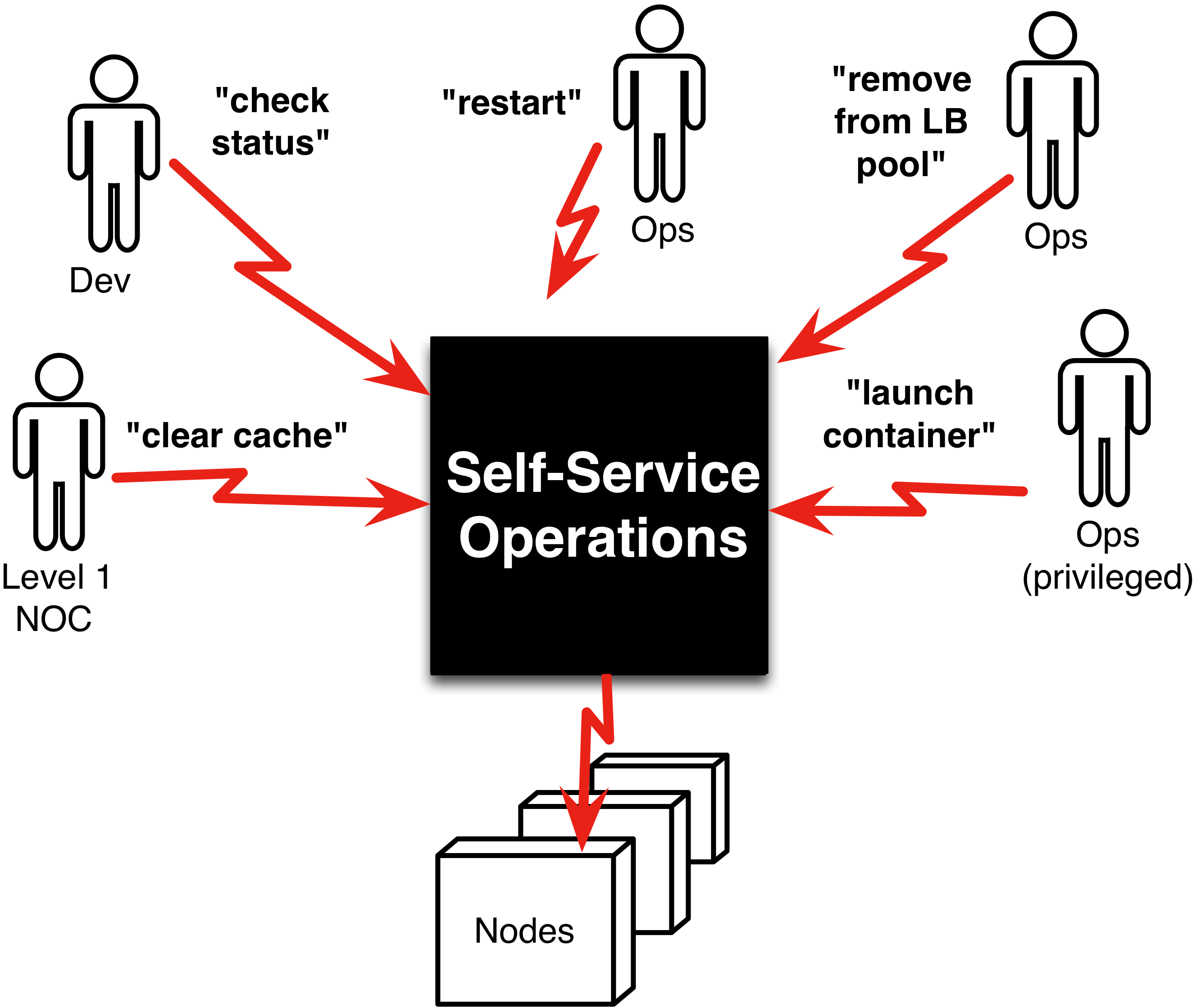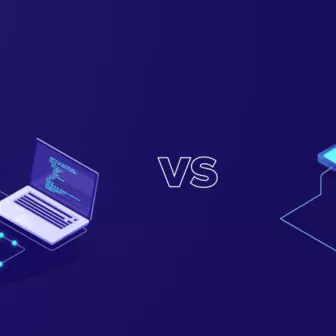DevOps has emerged as a revolutionary movement for the development of a full-fledged software and its implementation, keeping the entire system flexible, secure and reliable. We have been seeing a lot many DevOps definitions lately. In very common terms, DevOps can be described as the set of fundamentals which with the help of extensive tools forms a cultural base in between the Development(Dev) and Operations(Ops) teams for the fast and efficient delivery of the products to the end customers.

The term was coined back in the year 2009 by Pattrick Debois, named as the ‘Godfather of DevOps’ and is the founder of DevOpsDays conference. The major concern of a DevOps culture is to bring automation in the processes taking place in between the development and the IT teams systematically enabling the build, test, and release of a software product swiftly across a software development culture. In addition to that collaboration of the two development building blocks helps in the removal of the silos that existed back from the traditional software development times. However, the practice of connecting both the teams is a bit tedious but when done right it brings many significant benefits for a business as a whole.
Moving ahead, as there have been consistent alterations in the DevOps practices with the advent of microservices, declarative infrastructure, and serverless architecture. DevOps has entered into the new transformational era, termed as the ‘Cloud-Native DevOps’. It can neither be stated as a tool nor a new mode, else it can be referred to as the expansion of the set of practices being followed for a long time. As the infrastructure is going into the cloud and becoming more programmable following the changes in the communication between the development and operations teams resulting in the existing DevOps definition too.
Challenges that Follow
With the enhancement in the magnitude of daily changes and the rapid pace of the delivery of the task, the product development teams are more than happy to work in such a swift workflow structure. However, it emerges as a flexion point for the operations team. An innumerable number of problems and challenges followed with the overburdening and speed of the work affecting the operations teams' capability to deliver services competently.
‘Unbounded’ Interferences
The operations team encompasses a multitude of mix and match of tasks happening within a business consisting of both planned and unplanned ones. On one side is the engineering enclosing tasks like new environments production, measures to scale up the performance, analysis of new technologies, to name a few. On the contrary, constant interruptions like events related to security, customer requests, scaling, response for the incidents, inquiries, etc. arrive simultaneously in between while the operations teams are functioning on the former mentioned.
Apparently, every interruption that appears in front of the operations team is time-sensitive, persistently marked urgent by the request maker. This causes an undue interference for the conventional operational tasks which are required to get completed on time. Such interruptions are expensive. In addition to that, an abrupt assigning for the interruptions handling can’t be done. Teams with specified domain knowledge, skills, and previous work acquaintances are only considered capable to deal with the interruptions.
The aforementioned scenario lets the teams be bundled with several not-so-important tasks stirring an organization’s productivity and bringing disappointments and frustrations to the individuals.
Indefinite ‘Wait Times’
As the name propounds, it refers to the countless time spent on waiting for a task to get done as the task progresses has the dependency on the same. A substantial amount of time gets wasted in this wait-response-wait cycle. Analogous to interferences ‘indefinite waiting’ also deplete the productivity of the operations team, eventually impacting the efficiency of the organization as a whole.
Efforts Reaching ‘Infinite’
The continual revision of computing technologies from the decade has brought a major shift in the development of software applications. The systems moving from old technologies to a fully new paradigm will never acquire the completely new technology model, leaving behind the traces of the old patterns too.
The reason being budget, risk factor or a proper way to change everything from old to new. In any case, if there occurs a shift from old to new technology as a result of which complexity increases and legacy technology layer increment, it is the comprehensive responsibility of the operations team to handle the same. Sequentially, each new progression brings more complexity in handling the increased layers of the legacy technologies.
Presently, DevOps and cloud-native methodologies are changing the IT landscape completely by keeping an eye on the entire IT workflow. The major focus is the silo in the operations channel. With DevOps and cloud-native, organizations are building their capability of delivering low cost and enhanced quality products.
‘Fatal’ Silos
While the department and operations teams work in collaboration with each other in DevOps, still their work approach, visions, goals, and liabilities keep them way too far from each other like two separate entities.
Development favors speed, innovation and centralizes productivity whereas Operations believes in bringing stability eventually slowing down the software update process. This imparts Silos in the organization causing deceleration of the performance.
The major factors causing department silos are mentioned below.
- Unbalanced Information: Considering the fact, two sides are involved when there occurs an information processing from two different perspectives it leads to lots of confusion, errors and plenty of repetitive work to be done.
- Operations Inconsistency: The parties involved perform tasks assigned and follow distinct operational procedures to execute the same. The final product thus developed does not turn out to be as per the expectations of both the parties involved. Time and modulation mismatch occurs in between parts of processes resulting in many other different silos eventually leading to more errors and repetitive work.
- Contrast Tooling: The different parties involved when using different tooling or the not-so-properly arranged tooling sequentially increases the rework and errors inside the system. Furthermore, delays and variances are also introduced in the process.
‘UnEnding’ Ticket Queues
The request queues appearing at the boundaries of the silos and gradually increases. Stronger the silos longer the request queues. The silo effect being dominant lets the teams to fulfill the requests disconnecting them from the requestor. This, in turn, leads to more work and more errors. Longer cycle times, variability, increased overhead, lower quality and less motivation are the ill-effects of queues.
Solution - Operations as Self-Service (OaaS)

Self-Service operations enhance the efficiency of the organization by keeping the organization head over heels to be more flexible and seal off the things that are on-demand at a definite speed. A crucial technique emerged as a boon for the organizations shattering the barriers preventing organizations from achieving DevOps and digital transformations.
Self-Service can be defined as a streamlined process wherein the tasks from the operations are turned into the automated processes that can be availed as per the needs through different channels, like, command line, GUI, API.
The automated procedure comprises the following three elements, namely,
- Define - Defining the automated procedure.
- Execute - Capability of the execution of an automated procedure.
- Govern - controls and directs the automated procedures.
The roles and responsibilities are also checked for the same, like, who is responsible for the creation of automated procedures and how they do it? , who executes the automated procedure and how come they have the ability to do the same? who has the command over the procedure and how come they perform the successful management of security and compliances?
The major goal of the automated procedure fundamentals is to be the part of an organization and improve the workflow projecting the toil in the right direction. The combination of the aforementioned three elements enables Self-Service Operations. The self-service operations give more control into the hands of a requesting party letting them complete their tasks more efficiently keeping the feedback loops intact.
A Self-Service operations model can be successfully driven by many businesses. Return on investment is based on the distinctive environment of a company bringing decrement in the response times, drop-in errors and repetitive work, wait times, less unplanned work, etc.
Wrapping Up
DevOps and digital transformations have been thriving lately and are widening their reach day by day. While this brings lots of positive news for the development and product teams on one side and brings a lot more challenges for the operations teams with its increase pace and amount of work. Interferences, cross-functional silos, never-ending ticket queues, etc. are the few challenges faced by the organizations. Organizations should focus more one limiting the queues and minimize the silos. This can only be matched with organizational goals by self-service methods called as Operations as a Service(OaaS).
Subscribe
Related Blogs
Serverless vs Managed Services: Which One to Choose

When you decide to build an application in the cloud, you need to consider several factors. One of the most important…

Over the past few years, the cloud industry has gone through an extreme change with the transformation of serverless…
Putting The Serverless Trend Under a Microscope

Flexible. Scalable. Economical. These terms essentially sum up the advantages of serverless computing, an architecture that…




